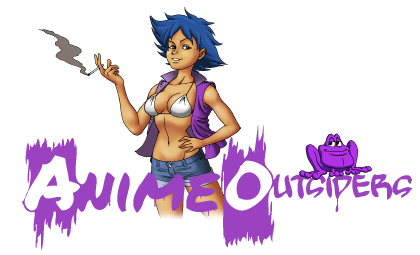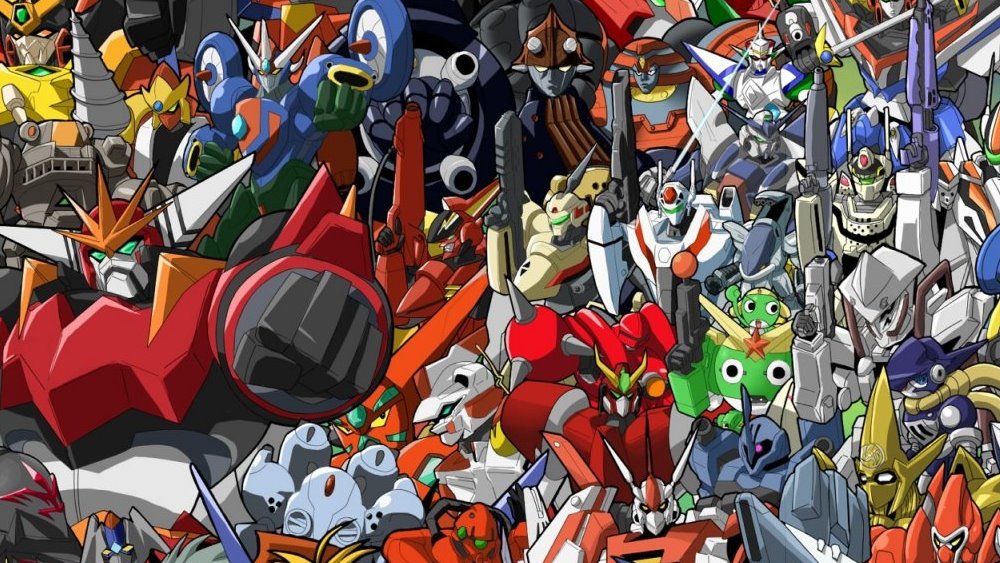Dean Talks Anime: Japan And Superhero Comics
By Christopher Kinsey

There have been a lot, and I do mean a lot, of great superhero style shows coming out of Japan recently. It makes sense that there would be some mega trends leaning some anime and manga to go with superhero stories. It’s been 11 years and 21 movies in the current “Marvel Universe” movie series which has taken the world by storm. And even before that, American comic book characters wove themselves into the Japanese comic scene over and over again with unique Japanese adaptations of popular American heroes like Batman and Spider Man. It’s an ebb and flow of ideas, style and influence that lead up to the modern day, where more manga is sold in America than traditional comics made in the USA.

Bring back Lord Death Man! More room for skeletons in Batman’s closet since Jason Todd came out of it as Red Hood.
There are lots of factors that seem to make up why this has happened. There’s the rise of online comics for a start. Storylines that have overly rebooted but still have to retain a sense of the character’s “History” so the fandom doesn’t hate the new material. Newcomers are lost in a sea of that aforementioned “History” while at the same time there are few showcases to see new material that might be of interest. Polarizing politics strewn across titles all over the place. And an often over looked factor: producing more comic lines for grown ups with disposable incomes rather than children. I have to dig for super hero comics that still cater to kids looking for adventure. Somehow more and more super hero stories for kids come in either the form of cartoons, books or toys but never as much actual comics. Which is weird because if you strike the right balance with a superhero comic you can tackle tough issues and still churn out fun adventures for kids. The easiest examples of which are the old X-Men and Batman cartoons of the 90s, which influenced the comics for a time to copy that fine line but somewhere we fell back into the “Superhero Comics Are Serious Storytelling” idea that seems to only be broken by a handful of independent publishers.

I usually put the oldest group shot of a Japanese super team up for these, but you know… This time I’ll pass.
So what about Japan? Their own comic field has been around a long time and is no strange to super powers. Each culture can pin point our most common heroes reflected in myth and folklore of our cultures. American superheroes would have no problem standing within a pantheon of Greek heroes and gods, while Japanese comic protagonists tend to share traits with classical stories all over Asia. Where would Dragonball be without the “Journey to the West”? When we think about Japan and superheroes, it’s hard to pinpoint where exactly we can see a “Superhero” in the western style as we know it. Many point to the super powered team of “Cyborg 009” which was created in 1964 by Shotaro Ishinomori. Several people from all over the world are taken by a mysterious organization and given bionic powers only to escape and turn against and act as a force for good. Ishinomori would further refine the idea of Japanese superheroics with other heroes such as The Skull Man and Kamen Rider. Super powered sci-fi teams remain popular to this very day in the form of numerous sentai series both animated and live action. There is something distinctly Japanese about this type of hero and powers derived from scientific discovery as a boon or a curse.
The initial draw for a superhero tends to be the powers themselves. Many Japanese style superheroes are excellent in hand to hand combat, have various weapons they are experts in and wondrous methods of transportation and/or giant robots because the only thing more awesome than a superhero is a superhero with a giant robot. But the powers seemed to stagnate. I would also argue that for the most part powers tend to stagnate in American comics about the same time. It’s this thing I call the “Justice League Syndrome” where you make a group of super powered people, they are heroes and villians, but they all seem to fulfill the same sorts of roles. You have someone super strong, someone who can shape shift, someone who is a pinnacle of human effort, etc, etc. But there are two series with super powers that not only pump out power after power, but make it interesting at the same time.

Thought we’d forgotten about you, eh Marvel Mangaverse?
In America we have “The Uncanny X-Men”. Said to be Marvel’s answer to DC’s “The Doom Patrol” the X-Men were a buffet of super powers that only had one trigger: They were mutants and these powers were innate. A literary device used by Stan Lee because he was tired of coming up for reasons why these people had super powers. And that served really well and the dynamic of people with these powers dealing with prejudice, hatred and more than your typical tights and fights fare resonated to the world from 1963 to today. The idea that anyone born can have a mutant power meant the storylines are constantly able to implement and explore any power they want and explore exactly what that means to the wielder of that power and those who are around that hero. A lot of the drama of X-Men can be put down to certain’s characters powers being a detriment to their quality of life, and that’s a great thing. If there is one downside to it is these stories are all contained within the Marvel universe, where many people have super powers who are not mutants, but no less dangerous so the impact of this mutant vs humanity struggle is lessened just because a certain type of super powered person gets more prejudice… just because. But the way American comics are you will never separate the two ideas ever again.

Sure it gets silly, sure it’s overly meme’d, but you will never see a more diverse set of super powers used in different situations. So much fun.
In Japan 1987 Hirohiko Araki created “Jojo’s Bizarre Adventure”. Not so much a tale of super powers at first, powers emerge in the first story arc as both vampirism and a kind of chi-based fighting style known as Hamon is introduced. The second arc continues that theme of globe trotting adventures combined with the idea of chi-powers versus vampires. But the third series put together in 1989 is “Stardust Crusaders” and it’s here we found Japan has it’s own super-power mill. This is the part of the series that introduces Stands, psychic powers that can take different forms and are used for both good, evil and mundane purposes. Since the introduction of Stands the series battles basically boil down to finding a new power and uniquely using the heroes powers to confront this new threat in innovative and imaginative ways. The whys and hows of Stands vary between series, but the fact remains Araki’s imagination when it comes to new powers know no bounds. While this isn’t exactly in the same clothes as a superhero story, it certainly has interesting powers to spare. In it’s 30+ years of existence sparking the idea of unique powers has rubbed off on a lot of creators to this very day.

ONE gives people with any level of artistic talent hope, because it’s the idea that sparks the imagination, not always the technique.
Many other series use unique powers to amplify battles in numerous shonen style series, like “One Piece” and the varying ninjitsu powers of “Naruto”. But the first series I can think of that committed, not just to unique powers but to what we might consider a western superhero mindset is “One Punch Man”. From humble beginnings in 2009 as a webcomic the series creator, known only as pen name “ONE”, has built a whole superhero society from the ground up. Rather than a gritty “What if superheroes were REALLY real” we tend to get in America, “One Punch Man” provides a backdrop where our hero, Saitama, is certainly a powerful titan, but faces a duality much like Peter Parker in the fact sure, you’re powerful but real life is out there, demanding bills be paid and society be run and all that. Combine that with other heroes and villains both dealing with the same struggles as Saitama, having very human qualities, and having unique powers, it’s no wonder it does so well all over the world.

The Kids Are All Right (Might?)
In 2014 Weekly Shonen Jump showcases Kohei Horikoshi’s “My Hero Academia”. After having a few well received titles under his belt, Horikoshi’s love for western comics comes to the forefront with a world in which everyone is born with a superpower in one form or another, but the twist is our main character, Izuku Midoriya, has no such powers. However his own grit and determination lets the world’s most powerful hero take Midoriya under his wing. Part high school comedy, part superhero smackdown this series is full of so many characters with unique powers it’s fun to discover along with everyone how these fights will pan out. It shares the whole puzzle solving aspect as “Jojo’s Bizarre Adventure” when it comes to powers while keeping that bubbly shonen feel on top of what I’d consider a kind of more traditional, western superhero pacing. It’s a delicate juggling act and your mileage may vary on how often this tile slips to one side of storytelling or the other, it’s certainly full of heart that anyone around the world can enjoy.
With more spin off series coming out from these projects and even more series that continue this fusion of eastern and western heroics (“Tiger & Bunny” is even getting a new series!) it’s easy to see why new comic readers are ditching the mountains of western comic lore and embracing series that focus on the characters of here and now. There is a bubbly fun to the Japanese take on American style superheroics and hopefully someday the decision makers at the two largest American comic companies will take note before it’s too late. Well maybe it IS too late for them, but small press and independent creators are certainly listening and doing just that. Excelsior!

All rise for the anime/comic nerd national anthem:
There’s a prehistoric monster, who came from outer space/ Created by the martians to destroy the human race/ The FBI is helpless, he’s 20 stories tall/ What can we do, who can we call?
Call Tobor, the 8th Man! Call Tobor, The 8th Man!/ Faster Than A Rocket. Quicker Than A Jet/ He’s the mighty robot. He’s the one to get./ Call Tobor, the 8th Man/ Quick, strong Tobor. The mightiest robot of them all!
Dean The Adequate feels great shame that he didn’t include “Anpanman” in this little history, but that would be like including “Barney the Dinosaur” in a history and discussion of “Jurassic Park”. And “Devilman”, while superheroic, took some really Japanese odd twists so he couldn’t really say it’s “like” American comics. OK, so we’re rambling a bit now. Point is, Clark Kent and Wonder Woman are the one true pairing and the result is A-Ko. Deal with it!


